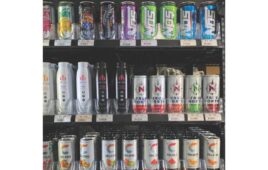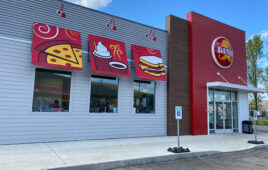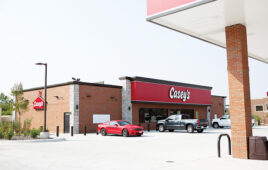Scan data analysis and machine learning can assist c-store retailers in maximizing their potential.
By Jeremie Myhren
It has been almost 45 years since a 10-pack of Juicy Fruit gum was the first item ever to have its barcode scanned. The collective convenience retail industry has long since implemented point-of-sale (POS) scanning, and for many those implementations are a distant memory.
When I first started in the industry in 2000, I would occasionally stop at mom-and-pop convenience stores and smaller chains that were still “open ringing” retail merchandise. Today, in 2018, I cannot recall the last time I’ve seen such a thing. I wouldn’t fault one for making the assumption that our industry is long since done with the adoption of retail scanning and there really is not much more to say on the topic.
However, I would deeply challenge that assumption if face to face with most convenience retailers. While we’ve all moved past creating and managing our merchandise price books and doing the necessary work to get our POS systems to scan, as an industry we still struggle with effectively understanding and responding to the data that is collected as a result of scanning.
On the surface, scanning is quite simple—we build a list of every item we sell, create a description and set a retail price. Depending on how our POS systems are configured we can block our cashiers from selling items for the incorrect price, and we can block our systems from selling items that aren’t in our merchandise price book.
We can look at reports and determine over customizable periods of time how much we are selling of a given item, or collections of items. We can even implement item level inventory, giving us a truer understanding of our retail margins and greater visibility into theft and loss. Based on my experience in the industry, that is where the majority of convenience retailers’ efforts and implementations of merchandise scanning extend.
ESSENTIAL INFO
Others, however, see great value and opportunity hiding in that data and take it to another level. Whether leveraging technologies such as basket analysis to understand what products commonly sell together (and conversely, what products do not pair well), or using cutting edge machine learning techniques, such as those employed by startups like C-B4 to perform advanced retail pattern recognition, our industry’s past investments in implementing retail scanning still have significant additional ROI dollars left to extract.
Who do you turn to, if after evaluating your current scan data practices you have found opportunity for improvement? Meet with your key technology suppliers, such as your POS system supplier and your back-office accounting software provider. Ask them how they can help you answer some of these unanswered questions of your data. Look to outside service providers, who do the analysis for you, providing you with the results so you can go act on them.
If you find some of these key questions of your data unanswerable, start to think about upgrading or replacing any legacy systems that are blocking you from fully monetizing your data.
Whether you’re a retailer or a supplier for the convenience industry, whether you work in fields like marketing, accounting, operations, IT or any of the other supporting professions commonly found within the industry, whether you represent a large chain or an independent operator with one or a handful of stores, the understandings and epiphanies that can be found in scan data apply to all of us.
Jeremie Myhren has been managing IT in the convenience retail industry since 2000. He is presently the chief information officer for Road Ranger LLC in Rockford, Ill.




